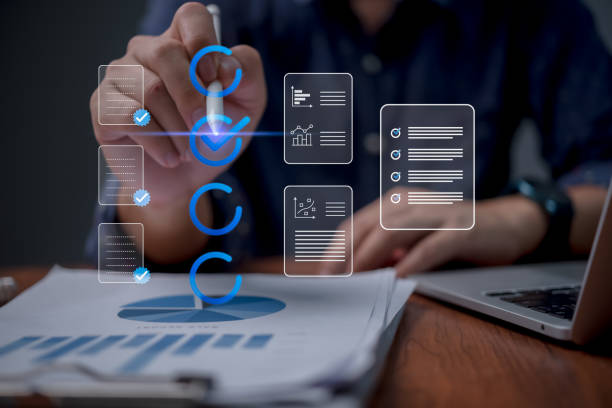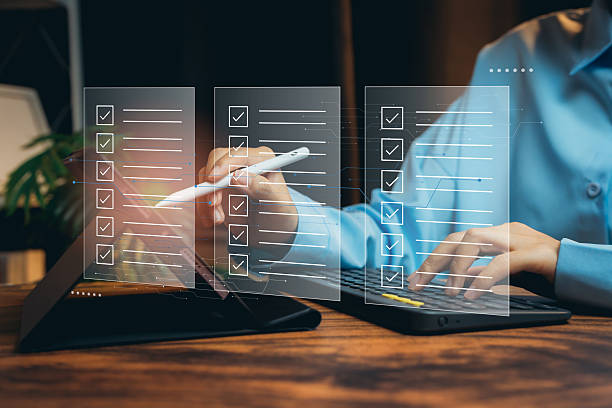Introduction to On-Page SEO and its Importance

In today’s world, where competition for visibility in search engine results is intensifying daily, #OnPage_SEO or #InPage_Optimization has become more important than ever.
This vital area of website optimization includes all actions you can directly perform on your website pages to achieve a better ranking in search results.
These actions not only help search engines better understand your content but also improve the user experience (UX) for visitors.
In fact, On-page SEO is the cornerstone of any successful SEO strategy, and without it, off-page SEO efforts will also not bear fruit.
A precise understanding of the influential factors in this area is essential for every webmaster and digital marketing specialist.
Since Google’s algorithms are constantly evolving, keeping knowledge and skills in this field up-to-date is crucial.
This educational and explanatory section helps you gain a deeper understanding of the various dimensions of on-page SEO.
For more information about the basics of SEO, you can refer to Wikipedia.
Did you know that some of the simplest changes in on-page SEO can have a profound impact on your site’s ranking? This is a thought-provoking content that invites you to delve deeper into this topic.
Are you dissatisfied with the low sales of your e-commerce website?
Rasawab is your solution for having a professional and high-selling e-commerce site.
✅ Significant increase in sales and revenue
✅ Easy and enjoyable shopping experience for customers
⚡ Get a free consultation from Rasawab now!
Keyword Research, The Backbone of On-Page SEO
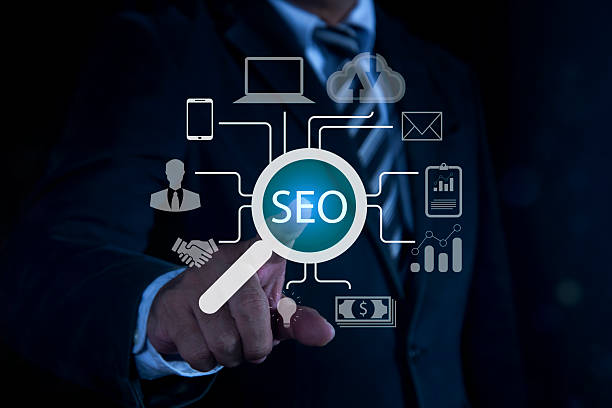
Before any action in #OnPage_SEO, precise and targeted #Keyword_Research is essential.
Keywords are the bridge between users and your content.
Choosing the right keywords not only helps you find your target audience but also paves the way for producing valuable and relevant content.
To begin, you need to consider what phrases your audience searches for on Google to find your product or service.
Using tools like Google Keyword Planner, Ahrefs, Semrush, or even Google’s related searches, can provide you with a broad view of search volume, competition, and related keywords.
Analyzing this data is the analytical and specialized part of this process that requires precision and experience.
The goal is not just to find high-volume keywords, but also to discover Long-tail Keywords that indicate a specific search intent and have less competition.
These keywords often lead to higher conversion rates.
After identifying primary and secondary keywords, you should naturally and purposefully use them in your page title, meta description, headings, body text, and even images.
This is a key guide for optimization success.
Did you know that keyword research helps you become aware of hidden opportunities in your market? For more information on keyword research, you can check reputable SEO resources.
Optimizing Core Page Elements and the Importance of Headings
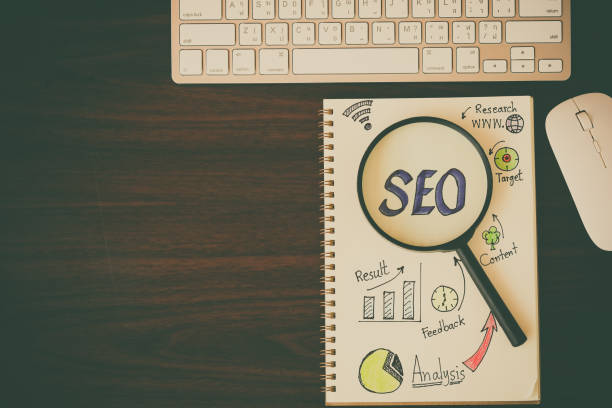
After conducting #Keyword_Research, it’s time to apply them to the core page elements for #OnPage_SEO.
The page title (Title Tag) is the first and perhaps most important on-page element, holding immense significance for both search engines and users.
This title should include your main keyword and simultaneously be attractive and encouraging for clicks.
Meta Description, although not directly impacting ranking, plays a key role in increasing the click-through rate (CTR), as it provides a summary of the page’s content and encourages users to enter the site.
These descriptions should also contain relevant keywords and engaging text.
Using a proper heading structure (H1, H2, H3…) is also of high importance.
H1, as the main page title, should include the primary keyword and be used only once per page.
H2 and H3 are used to organize content and subheadings, helping search engines better understand the structure and topic of your content.
This section is specialized and educational, providing you with precise guidance for implementing these items.
Adhering to these principles in on-page SEO leads to improved text readability for users and increased crawlability for search engines.
Below you will find a comparative table of the importance of various on-page SEO elements:
| On-page SEO Element | Description | Impact on Ranking | Impact on UX |
|---|---|---|---|
| Title Tag | Most important element for search engines and users. | Very High | Very High (CTR) |
| Meta Description | An attractive summary of content in search results. | Indirect (CTR) | Very High (User Attraction) |
| Heading Structure (H1-H6) | Content organization and readability improvement. | Medium | High |
| Keyword Density | Number of times the keyword is repeated. | Low (Excessive is Harmful) | Medium (Readability) |
Smart use of these elements makes a significant difference in your on-page SEO performance.
Content Quality and Structure in On-Page SEO
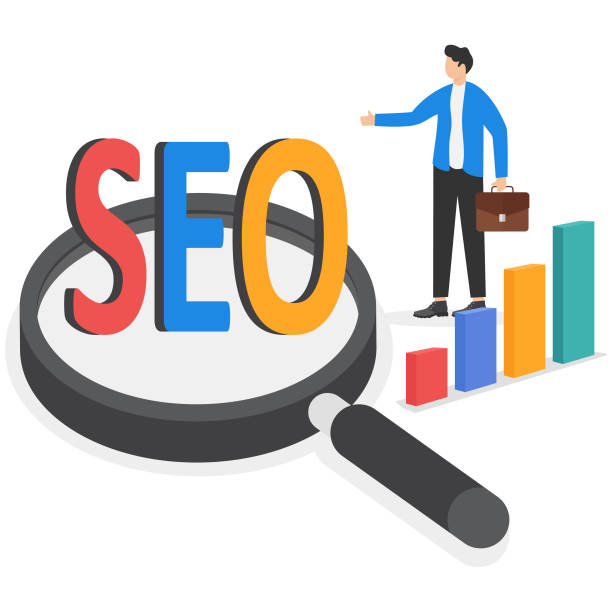
Content is king; this phrase applies more than ever in the world of #SEO and especially #OnPage_SEO.
Producing high-quality, comprehensive, and valuable content that meets user needs is one of the primary ranking factors in Google.
Your content should not only provide sufficient information but also be written in a way that is entertaining and engaging for the audience.
Avoiding content duplication, offering new and in-depth perspectives, and continuously updating information are among the characteristics of desirable content.
In addition to quality, content structure is also highly important in on-page SEO.
Using short paragraphs, clear and fluid sentences, bulleted and numbered lists, and relevant images greatly aids text readability.
These not only improve the user experience but also help search engines better understand the structure and main topic of your content.
This educational and explanatory approach helps you write content that is engaging for both users and search bots.
Did you know that Google prefers content that provides complete and comprehensive answers to user questions? Therefore, always try to produce thought-provoking content that encourages audience reflection and interaction.
Content length can also be important; longer and more comprehensive articles that address all aspects of a topic generally perform better in search results.
This is a key guide to elevating your website’s on-page SEO level.
Do your e-commerce site visitors leave before buying? Worry no more! With Rasawab’s professional e-commerce website design services, solve the problem of converting visitors into customers forever!
✅ Significant increase in conversion rates and sales
✅ Unparalleled and engaging user experience
⚡ Contact us now for a free consultation!
Image Optimization for Increased Speed and On-Page SEO
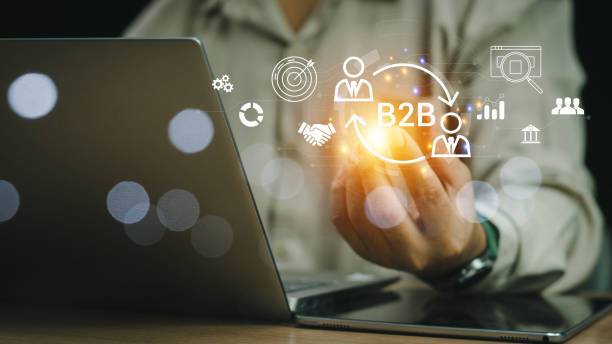
Images are an indispensable part of a modern website, contributing to visual appeal and better content comprehension.
However, if not properly optimized, they can significantly reduce page loading speed, which negatively impacts #OnPage_SEO and user experience.
#Image_Optimization involves several steps: Firstly, using appropriate image formats like WebP, which have a smaller size than JPEG and PNG, can significantly increase loading speed.
Secondly, compressing images without a noticeable reduction in quality, using online tools or WordPress plugins, is of high importance.
Thirdly, using Alt tags (alternative text) for images is essential.
Alt tags not only help search engines understand image content (which in turn aids ranking in image search) but are also useful for visually impaired users or when an image fails to load.
The Alt tag should include a keyword relevant to the image, but it should be written naturally and descriptively, avoiding keyword stuffing.
This specialized and educational section guides you on how to optimize your images.
Did you know that Google places great importance on site speed, and unoptimized images are one of the main reasons for site slowness? This is a thought-provoking point that invites you to re-evaluate your website’s images.
Using appropriate dimensions for images and defining dimensions in HTML code also helps the browser reserve the necessary space in advance and prevents sudden layout shifts.
The Importance of Internal Linking for SEO and Content Discovery
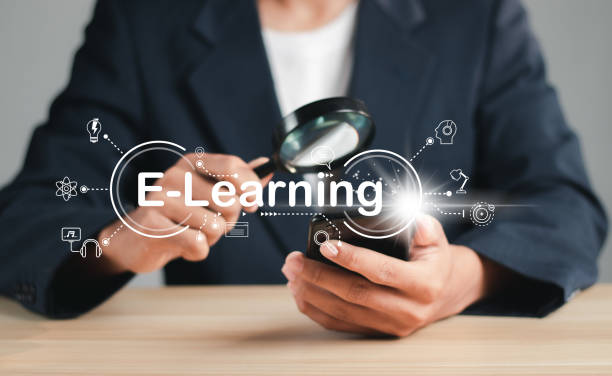
Internal linking or #Internal_Linking is one of the most powerful #OnPage_SEO tools that is often overlooked.
Internal links help search engines better understand your website’s structure, discover new pages, and distribute Link Equity across the site.
When you link from a high-authority page to another page, a portion of that authority is transferred to the destination page.
This is especially beneficial for new pages or pages you want to rank higher in search results.
Furthermore, internal links improve the user experience; they enable users to easily navigate between related pages and gain more information, which leads to increased time on site and reduced bounce rate.
The Anchor Text of internal links is also very important; try to use relevant keywords in the anchor text, but avoid using identical keywords for all links pointing to the same page to make them appear natural.
This is a detailed explanation and guide for optimizing internal links.
Did you know that Google can use your internal link structure to understand the topical relevance between different pages of your site? This is an important analytical point that highlights the importance of internal linking.
For a strong on-page SEO strategy, you should regularly review your pages and add relevant internal links.
This literally makes the difference between a successful site and an ordinary one.
Technical Aspects of On-Page SEO: Schema Markup and Site Speed
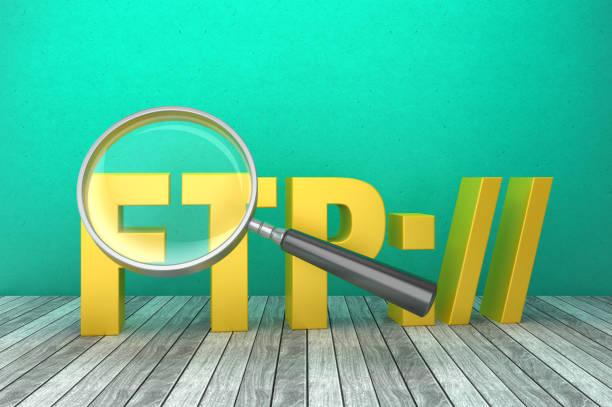
In addition to content and structural aspects, #OnPage_SEO also includes technical elements that directly impact your website’s Crawlability and Indexability by search engines.
Two of the most important of these aspects are Schema Markup and site speed.
Schema Markup, or structured data, are specific codes added to your website that help search engines understand page content with greater accuracy and display its information in an organized manner (such as review stars, product prices, event times, etc.).
This leads to the display of Rich Snippets in search results, which increases the visual appeal of your results and improves click-through rates.
To implement Schema Markup, you need specialized and educational knowledge in coding or using relevant plugins.
In this section, you will see a table of commonly used Schema Markup types:
| Schema Type | Usage | Example in Search Results |
|---|---|---|
| Product | Product specifications, price, availability, reviews. | Rating stars, price next to product. |
| Article | Articles, news, and blog posts. | Featured image, author name, publication date. |
| Review | Reviews and ratings (especially for products/services). | Star rating below the title. |
| Organization | Company information such as logo, address, contact number. | Display of company information in the Knowledge Panel. |
| FAQPage | Frequently asked questions and their answers. | Expandable list of questions in results. |
Another crucial factor is site loading speed.
Google has explicitly stated that page speed is a ranking factor, especially with the introduction of Core Web Vitals.
Reducing image sizes, using caching, compressing codes (HTML, CSS, JavaScript), and using a powerful hosting are among the actions you should take to improve site speed.
This information is informative and guidance to ensure your site is in the best technical condition.
A fast site not only provides a better user experience but also helps search engines crawl and index more pages of your site in less time.
The importance of on-page SEO in these technical dimensions ensures your site’s visibility and better performance.
The Role of User Experience (UX) in Improving On-Page SEO
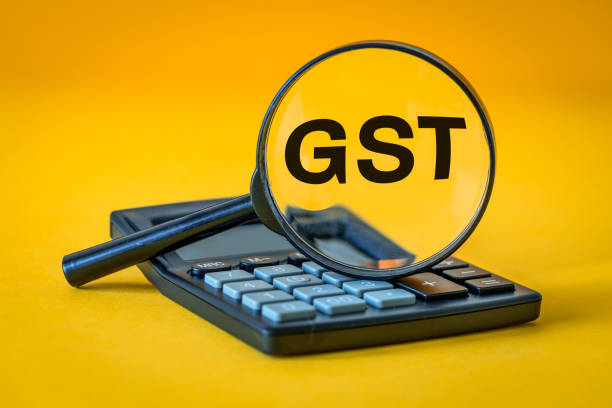
In recent years, Google has increasingly emphasized #User_Experience (UX) as an important factor in #OnPage_SEO.
Core Web Vitals, which include three main metrics LCP, FID, and CLS, directly address various aspects of user experience on web pages.
These metrics are signals to Google indicating whether users enjoy interacting with your website.
An excellent user experience not only indirectly impacts ranking (through reduced bounce rate, increased time on site, and increased engagement) but has also directly become a ranking factor through Core Web Vitals.
Responsive Design, which optimizes your site for display on various devices (mobile, tablet, desktop), is a fundamental principle of UX and consequently on-page optimization.
Easy navigation, appealing visual design, proper text readability, and clear Call-to-Action (CTA) buttons all contribute to improving UX.
This educational and explanatory section emphasizes that SEO is no longer just about keywords, but about user satisfaction.
Did you know that a site with poor user experience, even with the best content, might drop in rankings? This is a thought-provoking content that encourages you to take a deeper look at your site’s UX aspects.
Investing in UX improvement is an investment in the future of your on-page SEO and will yield long-term returns.
Did you know that poor online store design can drive away up to 70% of your potential customers? Rasawab revolutionizes your sales with professional and user-friendly e-commerce website designs.
✅ Significant increase in sales and revenue
✅ Full optimization for search engines and mobile
⚡ [Get a free consultation from Rasawab]
Monitoring and Analyzing On-Page SEO Performance

After implementing #OnPage_SEO strategies, the next step is #Monitoring_and_Analysis of performance.
SEO is not a one-time process, but a continuous cycle of implementation, monitoring, analysis, and re-optimization.
Using tools like Google Search Console and Google Analytics is essential for this purpose.
Google Search Console provides you with information about your site’s performance in search results, keywords you rank for, indexing issues, crawl errors, and Core Web Vitals status.
This information is vital for identifying technical and content weaknesses in your on-page SEO.
Google Analytics also provides valuable data on user behavior on your site (such as bounce rate, time on site, pages visited) which can help you identify and address user experience weaknesses.
Regular analysis of this data allows you to measure the impact of implemented changes and adjust your strategies based on evidence.
This is an analytical and specialized section that guides you on how to interpret data and use it for continuous improvement.
Did you know that even the smallest changes in your keyword rankings can be an indicator of changes in Google’s algorithms? Therefore, you should always have thought-provoking and analytical content in mind.
Monitoring competitors and analyzing their SEO strategies can also provide new insights for improving your on-page SEO.
Sustained success in SEO requires a data-driven and flexible approach.
Advanced Tips and the Future of On-Page SEO
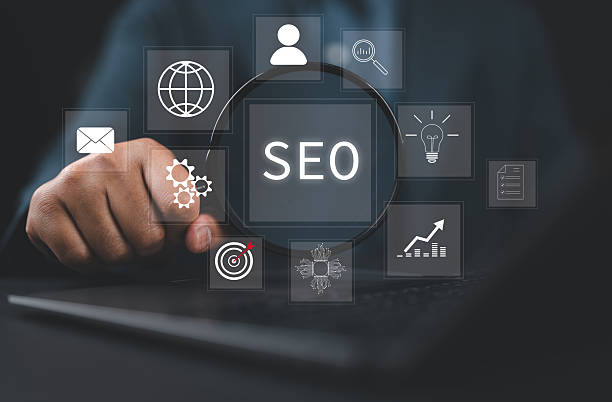
With the ever-evolving Google algorithms and advancements in artificial intelligence, #OnPage_SEO is also changing and moving towards more complex approaches.
Alongside basic principles, considering advanced tips and future trends is crucial for maintaining a competitive edge.
One such tip is optimizing for Voice Search.
With the increased use of voice assistants, you should tailor your content to answer natural and conversational questions and target long-tail keywords.
Focusing on Search Intent is also of high importance.
It’s no longer enough to just include a keyword on the page; you need to produce content that truly answers the user’s search intent, whether that intent is informational, navigational, or transactional.
Optimizing for E-E-A-T (Experience, Expertise, Authoritativeness, and Trustworthiness) is another important aspect emphasized by Google, addressing content quality and author/website credibility.
This section is specialized and analytical, providing you with a vision of the future of on-page SEO.
Our guidance is to always strive to go beyond the minimum and look for innovative solutions.
Did you know that Google is getting smarter every day and can understand semantic relationships? This is a thought-provoking content that invites you to delve deeper into understanding algorithms.
Always aim to produce comprehensive and user-friendly content that answers user questions and provides a satisfying experience for them.
This approach will help you lead the competitive on-page SEO landscape in the long run and solidify your position in search results.
Frequently Asked Questions
| Row | Question | Answer |
|---|---|---|
| 1 | What is On-Page SEO? | On-Page SEO refers to a set of actions performed within a website (on its pages) to improve its ranking in search engine results. This includes optimizing content, site structure, and HTML codes. |
| 2 | Why is On-Page SEO important? | On-Page SEO helps search engines better understand page content and determine whether that page is relevant and valuable for user searches. This better understanding leads to higher rankings. |
| 3 | What is the first and most important step in On-Page SEO? | Keyword Research is the most important initial step. By finding appropriate keywords, targeted content relevant to user needs can be produced. |
| 4 | What is the role of the Title Tag in On-Page SEO? | The Title Tag is one of the most important ranking factors and should include the main keyword. This tag is displayed as the page title in search results and influences the click-through rate (CTR). |
| 5 | What is the importance of Meta Description? | The Meta Description does not directly affect ranking, but by providing an attractive summary of the page content in search results, it can encourage users to click, thereby increasing the click-through rate (CTR). |
| 6 | Why is using headings (H1, H2, etc.) in content important? | Headings help structure content and improve readability for users and search engine crawlers. Using keywords in headings also helps search engines better understand the topic. |
| 7 | What does Image Optimization in On-Page SEO include? | It includes compressing images to reduce size, using descriptive and relevant file names, and filling the Alt tag (alternative text) with relevant keywords to help search engines understand image content. |
| 8 | What is Internal Linking in On-Page SEO? | Internal linking refers to creating links between different pages of a website. This helps distribute page authority (Link Equity), improve user experience, and assist search engine crawlers in discovering new pages. |
| 9 | Why is Page Speed important for On-Page SEO? | Page loading speed is a direct ranking factor and significantly impacts user experience. Slow pages can lead to an increased bounce rate and reduced user engagement. |
| 10 | What role does quality content play in On-Page SEO? | High-quality, comprehensive, unique, and valuable content for the user is the core of on-page SEO. This content not only attracts and retains users but also sends positive signals to search engines, contributing to better rankings. |
And other advertising services from Rasa Web Advertising Agency
Smart Reportage: A specialized service for increasing website traffic growth based on the use of real data.
Smart Advertising Campaign: A professional solution for analyzing customer behavior with a focus on intelligent data analysis.
Smart Conversion Rate Optimization: Designed for businesses seeking to improve SEO ranking through precise audience targeting.
Smart Sales Automation: A novel service for increasing click-through rates through marketing automation.
Smart Conversion Rate Optimization: Designed for businesses seeking online growth through user experience customization.
And over hundreds of other services in the field of internet advertising, advertising consultation, and organizational solutions
Internet Advertising | Advertising Strategy | Advertorial
Resources
Complete Guide to On-Page SEO
Content Optimization for SEO
Professional Keyword Research
Principles of Technical SEO
? Are you ready for your business to shine in the digital space? Rasaweb Afarin, by providing comprehensive digital marketing services including corporate website design, SEO, and social media management, paves your path to success.
📍 Tehran, Mirdamad Street, next to Bank Markazi, Kazerun Jonoubi Alley, Ramin Alley, No. 6

